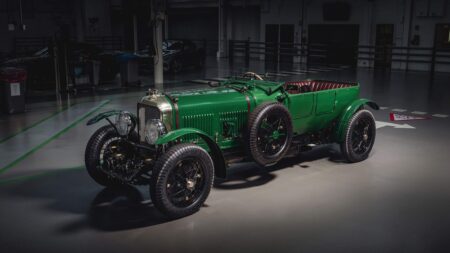
Bentley Speed Six rides again – 12 to be built
Car of the month – Bentley speed six That Bentley looks familiar... Yes, well, it has been gracing the pages of Motor Sport for almost as long as the magazine…

How do you compare drivers of different eras? Is it even possible? There are so many different variables that separate the birth of racing itself, Formula 1, and the sport we have now. And the same can be said for the collectibles coming from those eras.
We see three distinct spans here: ‘vintage’ (pre-WW2), ‘classic’ (the birth of F1 in the 1950s through to the 1990s) and then the ‘modern’ era. Each era is interesting. Take vintage collectibles: Any original items from the time of Tazio Nuvolari, Rudolf Caracciola and such are incredibly rare. This is a period where there were only a handful of events, drivers owned their own kit (and sometimes their cars too) and merchandise wasn’t invented. That sounds like a recipe for big-ticket museum-piece items, but actually the hunger for this period has diminished, now it’s a specialist collectors’ market or museums mainly.
The classic – in living memory – period is more accessible. Collectibles from F1’s early years can be rare and expensive, but from the 1970s we start to see merchandise arriving along with big sponsors and drivers like Niki Lauda, Gilles Villeneuve and James Hunt. Items from that period are very collectible; and many can be a good investment. Collectors are the TV generation that now have the income to own a piece of the past from their boyhood heroes.
The modern era collectible market is harder to predict. The market is very strong for drivers like Michael Schumacher and Mika Häkkinen. Currently, team merchandise is so prolific, and we live in a far more disposable age. Who knows if the current drivers will be revered in 20 years’ time in the same way Michael Schumacher or Ayrton Senna are now?
Andrew Francis is director at The Signature Store
thesignaturestore.co.uk